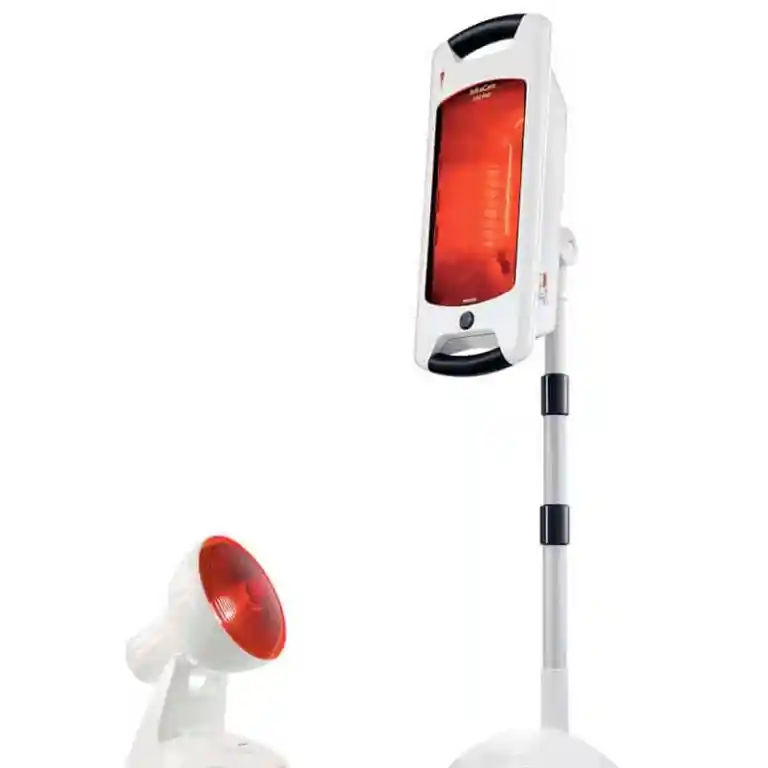Therapeutic modalities such as thermotherapy use superficial heat and cold therapy for treating disease or trauma. Heat can be transferred by several different mechanisms: conduction, convection, radiation, evaporation, and conversion. Most therapy modalities transfer energy by conduction, the transfer of heat by the direct interaction of the molecules in one area with those in another area. The most common examples are cold and hot packs.
Cryotherapy is one of the oldest methods of physical therapy used during acute phase injury. Cold causes vasoconstriction, decreased blood flow slowing edema formation, decreased swelling, reduced enzyme-mediated tissue damage and analgesia. Cryotherapy inhibits proteases, collagenases, and hyaluronidase decreasing acute phase proteins and inflammatory process. Forms of cryotherapy applications include ice packs/cold packs, cold immersion, and ice massage.
Physiologic effects of heat include vasodilation and increased circulation, pain relief, increased soft tissue extensibility, and relaxation of muscle spasm. Heat leads to increase in metabolic rate, reabsorption of edema and increased rate of tissue oxygenation. Commonly cryotherapy are useful immediately after surgery or with an acute injury whereas warm packs are beneficial in the chronic cases or with peripheral edema. Cold therapy is a better choice when pain and muscle spasms are present.

Ice compresses provide an excellent method to help control pain and inflammation in the immediate postoperative period. Not only is cryotherapy beneficial in the acute phase of tissue injury and inflammation, it is also advantageous after exercise and throughout rehabilitation when inflammation occurs. The effects of cryotherapy include vasoconstriction, decreased blood flow, reduced cellular metabolism and permeability, attenuation of traumatic or exercise-induced edema, and decreased muscle spasm. Another primary effect of cryotherapy is analgesia, which is thought to be a result of decreased sensory and motor nerve conduction velocity that occurs when nerve fibers are cooled.
Cryotherapy results in significant reductions in intra-articular temperatures of peripheral joints. After 15 minutes of ice application to the canine stifle, the temperature inside the joint can drop 7.4 F (4.1 C). Immersion in ice water can produce a more marked decrease in stifle joint temperatures (36.4 F [20.2 C]) but may produce decreases in rectal temperatures. Temperature changes vary depending on the type and depth of tissues cooled. In one study, ice packs applied to dogs’ thighs for 20 minutes resulted in a precipitous drop in temperature of tissues up to a depth of 1 cm, but minimal cooling occurred at tissue depths of 3 cm. However, the tissue temperature remained below normal for 100 minutes.
Therapeutic ultrasound also effectively heats tissues up to 5 cm deep.
Superficial heat causes vasodilation, which improves circulation to the superficial tissues, increases tissue oxygenation and transportation of metabolites, and increases the rate of enzymatic and biochemical reactions to facilitate tissue healing. Heating soft tissues before stretching allows for greater extensibility of collagenous tissues. Maximum deformation occurs when tissue temperatures are maintained at 104 to 113 F (40 to 45 C) for a maximum of five to 10 minutes while applying a stretch force. Joint stiffness can be reduced and range of motion can be improved immediately after heat is applied.
Application of heat in the early inflammatory phase of healing is not recommended because swelling and edema may increase and result in further tissue damage.